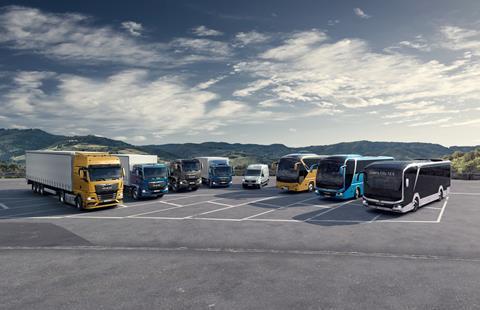The strong ramp-up in commercial vehicle production following the coronavirus shutdowns has been facilitated by better transparency and communication in the supply chain according to speakers at this week’s Automotive Logistics and Supply Chain Live conference. However, there is still room for improvement as the sector deals with the fallout of the coronavirus and new pressures on the inbound supply chain.

The strong ramp-up in commercial vehicle production following the coronavirus shutdowns has been facilitated by better transparency and communication in the supply chain according to speakers at this week’s Automotive Logistics and Supply Chain Live conference. However, there is still room for improvement as the sector deals with the fallout of the coronavirus and new pressures on the inbound supply chain.
Peter Hörndlein, head of logistics, MAN Truck & Bus, said communication was a key success factor and had opened up new channels with tier X suppliers. The dialogue necessitated by the pandemic revealed that the company had weaknesses in its supply chain that were previously not identified.
“You are only as strong as your weakest link and we found out that there were weak links in the supply chain that we didn’t worry about before,” he said.
One example was in the supply of sensors, used for a range of devices on trucks but also used extensively in the medical field.
“All of a sudden they were regulated and the priorities got shifted so it was hard to predict what was coming in,” said Hörndlein. “But we kept up very open and frequent communication. The digital means helped us to do that, with daily conferences with the critical suppliers.”

Peter Hörndlein, head of logistics, MAN Truck & Bus
Hörndlein went on to explain that every time MAN sent increased call off requests to suppliers it also double-checked with those suppliers that they had parts and could confirm the capacity on hand. That was part of an overall effort to secure the inbound supply chain as much as possible and Hörndlein was cognizant of what a collaborative effort securing it had been.
“I really want to thank our suppliers and LSPs, and transport companies at that moment. It was a joint effort and really proved that the parties in the logistics supply chain could really work together when it mattered and find quick solutions,” he said. “I hope this spirit is something we can carry on after the pandemic and examine what we learned from that experience, and what can be transferred to improve our processes and collaboration in the future.”
Transparency through the supply chain is also now a priority at Scania CV, according to its senior vice president of logistics, Fabio Castello, particularly given the pressures that suppliers are now under to meet the demand of a V-shaped recovery, while also observing workplace regulations on physical distancing and issues of recruitment.
“This is going to be a challenging ramp up and therefore the transparency and the communication with the suppliers and service providers is extremely important,” he said.

Castello explained that Scania is pursuing a number of communication channels with its critical suppliers, from webcasts and portals to the traditional methods of phone and email, and even writing letters, to make sure it understands the issues in the supply chain and can act quickly in the enduring unknown territory created by the coronavirus pandemic.
That understanding of what is affecting the supply chain is critical to everyone involved.
“Those who are part of our supply chain and want to be part of our supply chain in the future have to focus on transparency to really understand what is happening, and we have to be digitalised so we can optimise communications and the logistics processes,” said Castello.
Hörndlein said a higher frequency of communication with the supply base and logistics providers was key to being more agile and flexible.
“If we are planning for an increase in a particular area we ask the suppliers to prepare their production for it and if things do not turn out as we predicted then we let them know immediately,” he said. “We keep a tight relationship.”
Hörndlein said it did not make sense to stock up on parts right now because of the “immense pressure” being put on the supply chain at the moment: “There is stable demand on the truck side and a good order book. On the bus side it is a lot more volatile but we have also prepared our factories to be flexible so one bus plant can help the other and vice versa if we experience peaks or downturns on certain products.”
Truck orders are also good at Scania and Castello said that while there remained a degree of uncertainty it was good to work towards a future where volumes and installed capacity are returned to normal. However, he added it was important to learn from the crisis and maintain the greater efficiencies brought about by faster digitalised communication and virtual working.
Hörndlein agreed: “We accomplished things that no one thought were possible in the past and we were able to adapt to the situation quickly and learn a lot, make decisions and successfully manage it. That learning aspect gives me optimism for the future.”
Videos from Automotive Logistics and Supply Chain Live can be viewed here.

























![Global[1]](https://d3n5uof8vony13.cloudfront.net/Pictures/web/a/d/s/global1_726550.svgz)













No comments yet